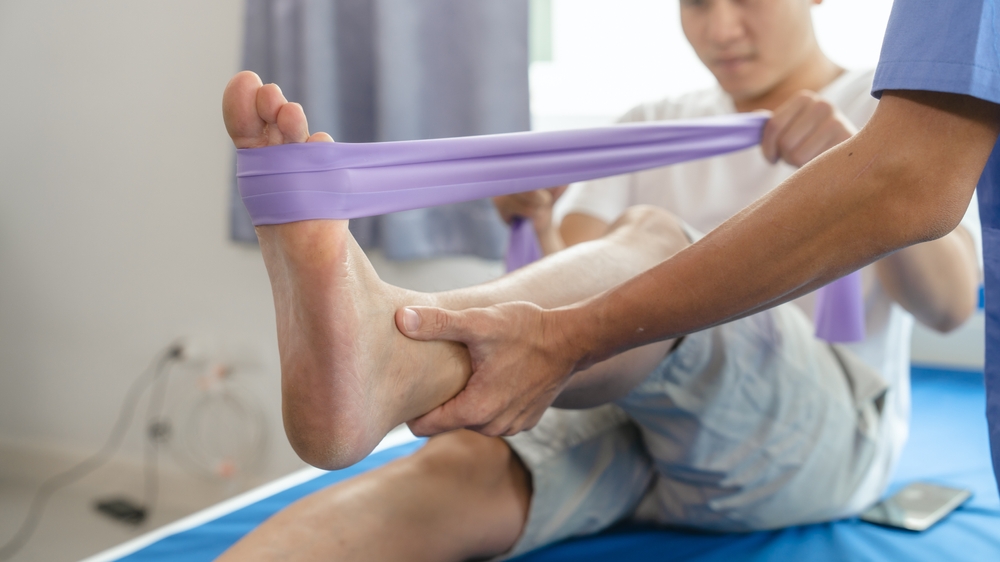

Limited Range of Motion – Causes, Diagnosis, and Treatment at Emirates Hospitals Group
Limited range of motion (ROM) occurs when a joint, muscle, or other body part cannot move through its full range of motion, leading to discomfort and restrictions in daily activities. This condition can affect any joint in the body and is often associated with pain, stiffness, and functional limitations. Whether it’s the result of an injury, a chronic condition, or age-related changes, prompt diagnosis and appropriate treatment are essential to improve movement and quality of life.
Causes of Limited Range of Motion
Several factors can contribute to limited range of motion, including:
- Joint Injuries: Fractures, sprains, or dislocations can damage the ligaments, tendons, or cartilage around a joint, leading to reduced flexibility and pain.
- Arthritis: Both osteoarthritis and rheumatoid arthritis can cause inflammation and degeneration of the joint, resulting in pain and stiffness that limits movement.
- Muscle Strains: Injury or overuse of muscles surrounding a joint can lead to tightness or weakness, restricting motion.
- Tendonitis: Inflammation of tendons, often due to repetitive motion or injury, can cause pain and limit a joint’s range of motion.
- Bursitis: Inflammation of the bursa, which cushions the joints, can lead to swelling, pain, and restricted movement.
- Frozen Shoulder (Adhesive Capsulitis): A condition that causes stiffness and tightness in the shoulder joint, severely limiting the range of motion.
- Scar Tissue Formation: After surgery or injury, scar tissue may form, leading to joint stiffness and a limited range of motion.
- Degenerative Conditions: Chronic conditions such as degenerative disc disease or osteoporosis can lead to stiffness and reduced movement due to damage to the bones or spinal discs.
- Nerve Compression: Nerve impingement in the neck, back, or other areas can result in muscle weakness and reduced flexibility in the affected joint.
Symptoms of Limited Range of Motion
The symptoms associated with a limited range of motion vary depending on the joint or body part affected but may include:
- Pain or tenderness when attempting to move the joint.
- Difficulty moving the joint through its full range, such as bending, straightening, or rotating.
- Stiffness or tightness in the muscles or joints.
- Swelling or inflammation around the affected joint.
- Muscle weakness or fatigue when attempting to perform movements.
- A feeling of joint instability or “locking” when trying to move.
Diagnosis of Limited Range of Motion
To determine the cause of limited range of motion, a comprehensive evaluation is needed. Common diagnostic methods include:
- Physical Examination: A doctor will assess the affected joint’s range of motion, muscle strength, and the presence of pain or swelling.
- Medical History: A review of previous injuries, surgeries, or underlying health conditions will help identify potential causes of restricted movement.
- X-rays: Imaging tests to evaluate bone structure and check for any fractures, arthritis, or degeneration in the joint.
- MRI or Ultrasound: These imaging techniques provide a detailed view of soft tissues like tendons, ligaments, and cartilage, helping to identify inflammation or tears.
- Blood Tests: Blood work may be used to identify underlying conditions such as infection, arthritis, or autoimmune diseases.
- Joint Aspiration: In cases of suspected infection or inflammation, a doctor may remove fluid from the joint for analysis.
Treatment for Limited Range of Motion in Dubai
At Emirates Hospitals Group, our experienced orthopedic specialists work to identify the root cause of your limited range of motion and offer a comprehensive, personalized treatment plan to restore mobility and relieve pain.
Treatment for limited range of motion depends on the cause, severity, and location of the condition. Common treatment options include:
- Physical Therapy: A specialized program of exercises and stretches aimed at improving flexibility, strengthening muscles, and restoring joint movement.
- Medications: Nonsteroidal anti-inflammatory drugs (NSAIDs) can reduce pain and inflammation, while corticosteroid injections may provide relief in cases of severe inflammation or arthritis.
- Rest and Ice: Applying ice to the affected area and resting the joint can help reduce inflammation and provide relief from discomfort.
- Heat Therapy: Heat can relax muscles and improve blood flow, helping to alleviate stiffness and increase range of motion.
- Joint Injections: Corticosteroid injections or hyaluronic acid injections may be used to reduce inflammation or lubricate the joint in cases of arthritis or tendonitis.
- Surgical Intervention: In cases of significant joint damage, torn ligaments, or degenerative conditions that do not respond to conservative treatments, surgery may be necessary. Procedures may include joint arthroscopy, tendon repair, or joint replacement.
- Massage Therapy: Deep tissue massage or myofascial release can help relax tight muscles and improve mobility around the affected joint.
- Lifestyle Modifications: Maintaining a healthy weight, practicing proper posture, and avoiding activities that strain the joints can prevent further limitations in movement.
Related Treatments
- Knee Pain Injection Clinic
- Dislocated Shoulder
- Hand & Wrist Tendon Injuries
- Hand & Wrist Ligament Injuries
Request an appointment
Please complete the details and we will book you shortly.
